Can a classic steel race bike beat a modern superbike?
We fit power meter pedals to a Colnago C68 and a Colnago Master Olympic and ride them back to back to find out what 30 years of progress translates to in the real world. As it turns out? 14 seconds.
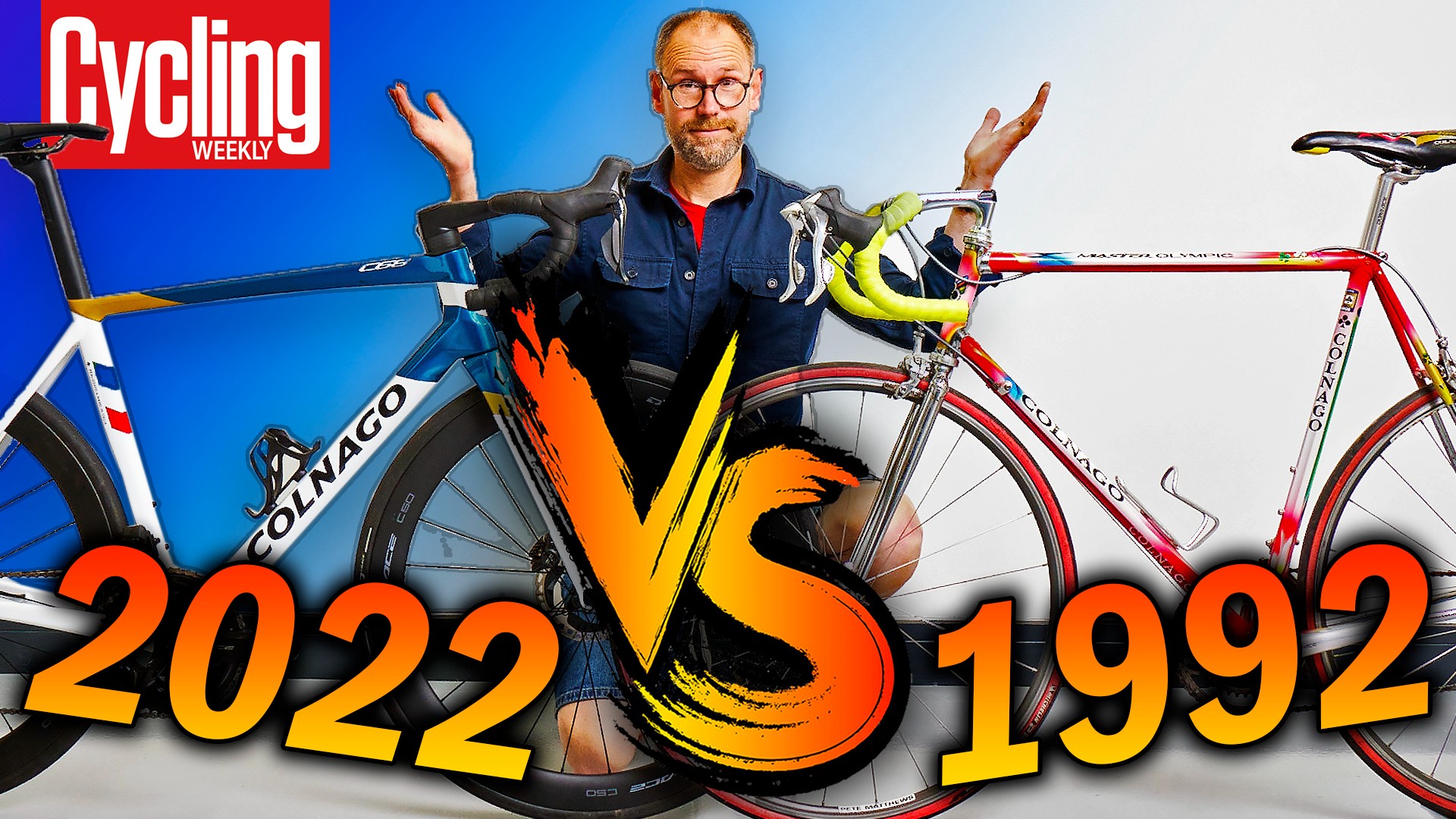

Modern road bikes use cutting-edge technology to promise consumers speed, comfort and efficiency. Wind tunnel testing of frames and components is common, and with prices often exceeding five figures, these bikes are - arguably - superbikes. The data and technology has come on in leaps and bounds, but what's the real-world effect? We pitted two bikes against each other to find out.
The brand new Colnago C68 is an example of an absolutely state of the art machine. For a lot of people it’s the best bike money can buy in 2022.
The classic Colnago Master Olympic was the state of the art and was the best bike money could buy in 1992.
But how much of a difference does 30 years really make? Yes the C68 is a lighter, more aerodynamic bike, it's a stiffer bike, and more comfortable than the Master Olympic - but is it actually faster? We used a pair of Wahoo Powrlink Zero power meter pedals to collect the data required to answer that question.
First of all, we fitted the power meter pedals to both bikes and rode them at (approximately) the same average power around the same undulating 7.3-miles course one after the other.
Then we went over to Leith Hill - included in the UK book of 100 Greatest Cycling Climbs as No17 - which is about a mile and a quarter at an average of 8%. Again, we rode them one after the other.
Before we dive into the data, here's a look at the competitors...
The modern superbike: Colnago C68
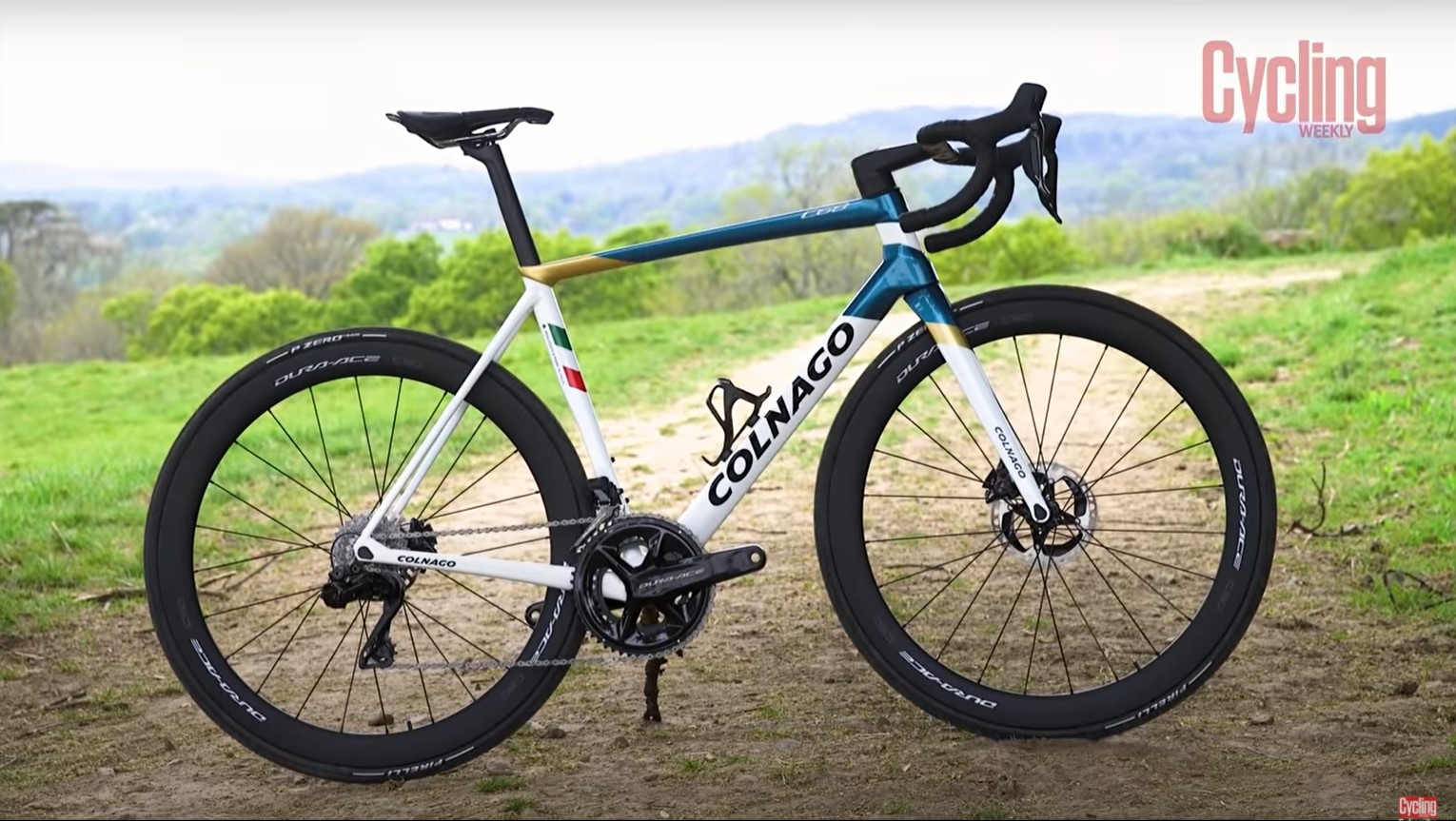
The all-new 2022 Colnago C68 is something really special. This is the ultimate blend of tradition and technology.
It looks like a carbon monocoque but it actually has integrated lugs. The bottom bracket shell is part of the seat tube, while the top tube incorporates lugs that join it to the head tube and seat tube. This is the most sophisticated Colnago C series bike so far - its flagship handmade carbon bike.
It’s lighter, more aerodynamic and crucially more comfortable than ever before. It’s handmade in Italy as all the C series Colnagos traditionally have been yet it looks like it belongs 100% in 2022.
It has the latest Shimano Dura-Ace 9200 Di2 electronic groupset, which is 12 speed with a 52/36 at the front with a 11-30 cassette - plenty of options to drop into easier gears when the road goes up.
It has Dura-Ace hydraulic disc brakes on super wide Dura-Ace wheels- compared to its ancestor at least - these are fitted with 28mm Pirelli P Zero Race tyres, which will no doubt offer a comparatively plush ride. The full build tips the scales at 7.3kilos.
Beauty is in the eye of the beholder of course, but to my eye this has got to be the most beautiful of any current carbon bike.
So what’s it up against?
The classic steel bike: Colnago Master Olympic
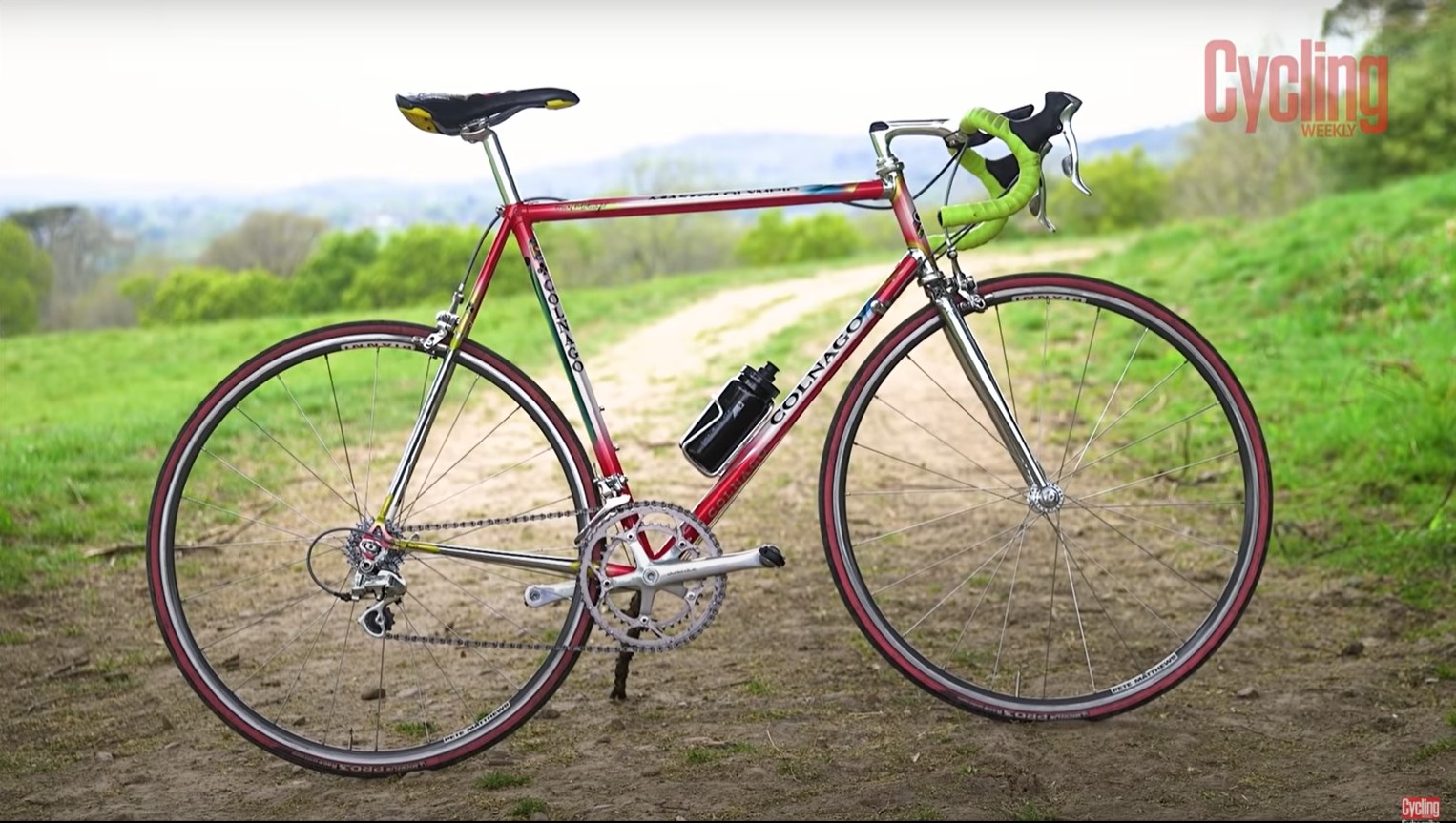
The Colnago Master Olympic is made from steel - special steel Columbus tubing with a star-shaped profile that Colnago developed with Gilberto Colombo, brother of Columbus head honcho Antonio, whose company usually made race car chassis. And this bike was built for speed.
It has aggressive geometry, tight clearances and the straight Colnago Precisa steel fork, designed for rigidity and directness.
This bike is also built up with Shimano Dura-Ace, but 7700 is a very different animal. This was launched in 1996, it's nine speed, has a 53/39 racing chainset and a close-ratio 12-23 cassette. All of that means that there's a lot less room for spinning in easier gears.
It has rim brakes, Dura-Ace calipers of course, and handmade Pianni wheels - actually British made by Pete Matthews - and terrifyingly narrow-looking 23mm Michelin tyres. Weight? Just over nine kilos
It also sports an incredibly eye-popping - some might say lurid - airbrushed paintjob which I personally think looks gorgeous next to the polished aluminium of the Dura-Ace components.
If you recognise this bike it’s because it’s the one I used for my ‘10 things we miss about old road bikes’ video. I really like everything about it - in fact, it might even be my favourite bike. Any modern bike that wants to beat it has got to be something really special.
First test: the 7.3-mile TT circuit
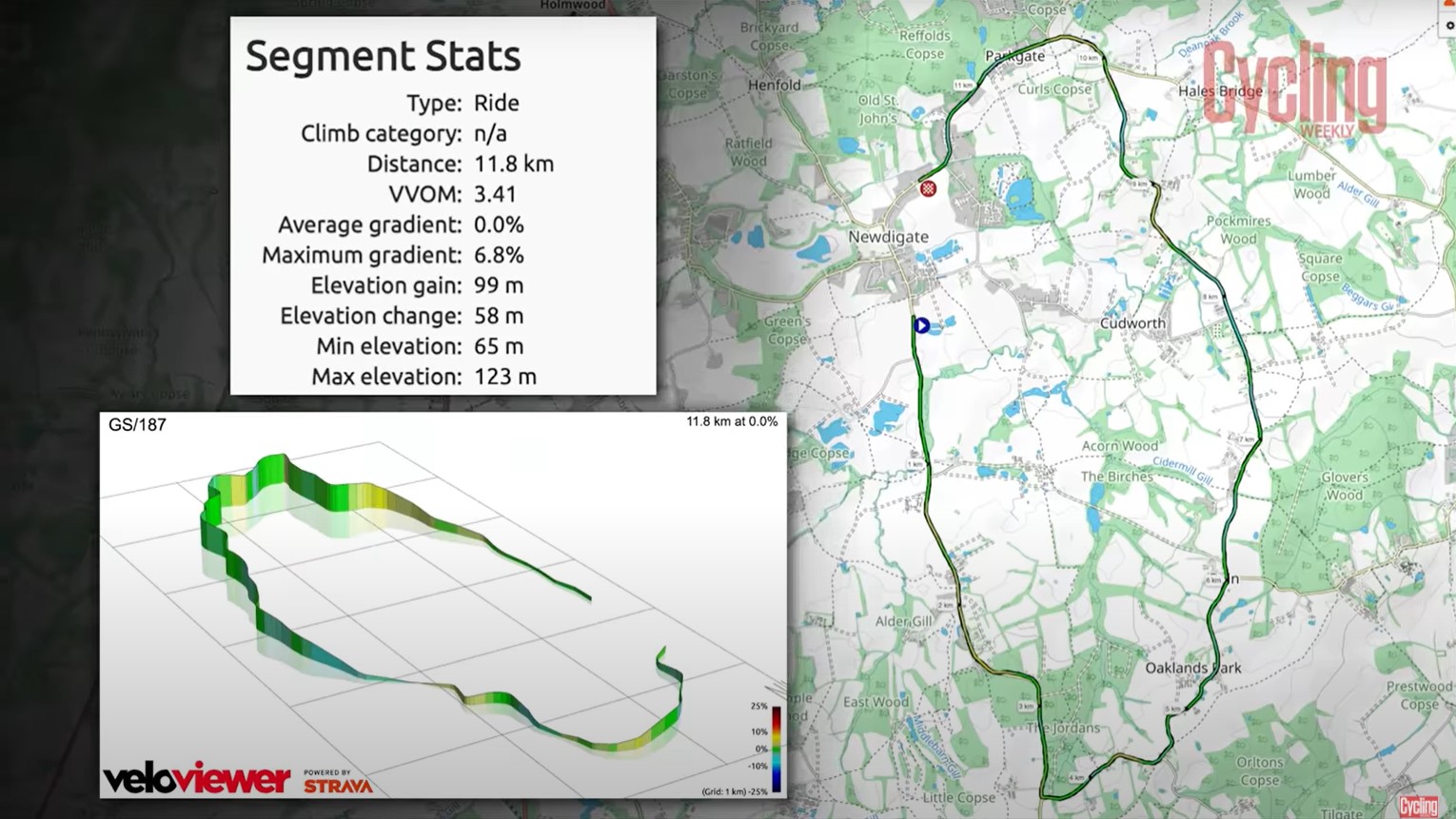
The 7.3 mile Newdigate circuit (course code GS/187, for the time trialling geeks out there) is my nearest time trial course and I’ve probably ridden it hundreds of times over the years.
The course starts with a long drag up into the woods, turns left and starts coming back down pretty fast. It has some high-speed bends that are great for checking cornering stability. The route finishes with a couple of uphill kickers, just when you’re getting really tired, and passes a really nice pub that makes me wonder every time, ‘why am I killing myself out here instead of sipping a nice pint in there?’ - before a final dash to the line.
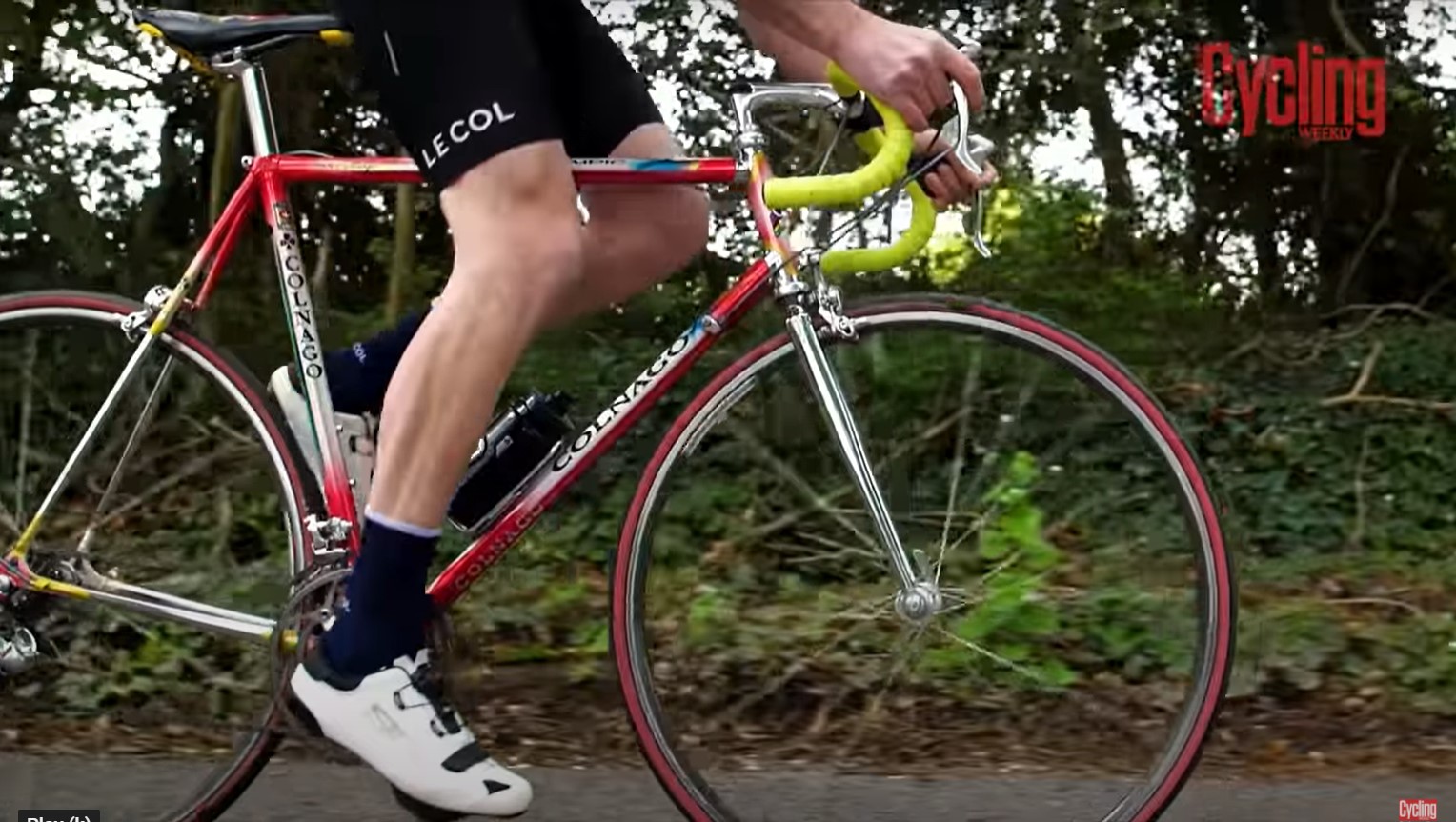
What will the data tell us? Well, it will mostly be about aerodynamics: how many watts can be saved by the lower coefficient of aerodynamic drag (CdA) afforded by smoother lines in the C68, presumably.
Another factor is rolling resistance - the energy that is lost when the tyre is rolling. Since these lanes are rough, it's likely this will make up a bigger proportion than usual.
Finally, road bike groupsets have come on a lot (we're told) over the years, with improving efficiency an oft-cited upshot - so there may be an element of drivetrain friction in there.
The thing that isn’t measurable is how hard it felt to ride this course at the 225 watt average; 225 watts is in the cycling training zone 3 for me, so it’s tempo but not too hard. I chose it because it would give an average of around 20mph, the speed a club rider might do, and hopefully one that's high enough to detect a difference between the two bikes.
Additionally, would one bike make it seem easier or harder to ride at 225 watts than the other?
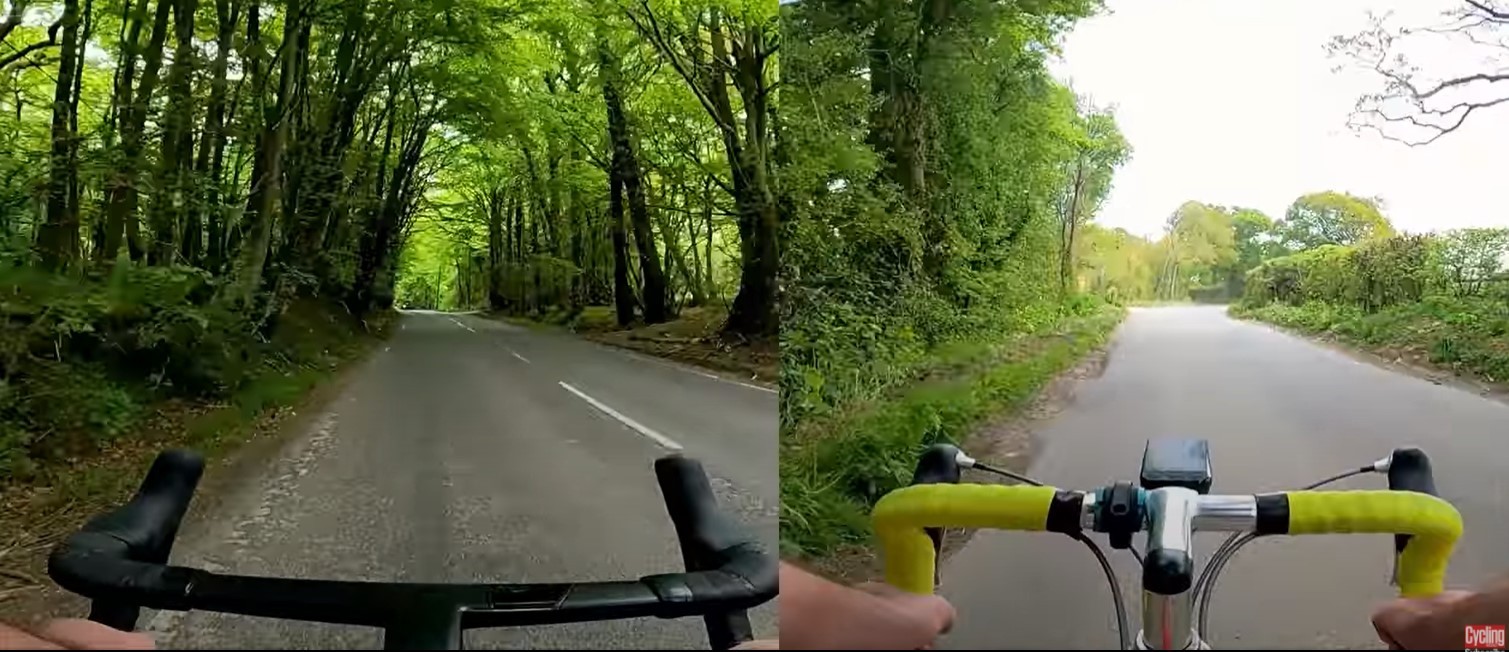
I rode the Master Olympic first and for the Newdigate course clocked 21.15 for 225 watts and 20.7mph.
Then I rode the C68. I was enjoying myself so much that I found myself riding a bit harder and accidentally finished on 234 watts, 20.53 and 21.1mph.
I have to say maths was never my strongest subject at school so I asked Xavier Disley at Aerocoach how to adjust the times correctly so that I could compare. He used a standardised calculation that would determine the difference in power required to ride at the same speed. The scores on the doors? 6.3 watts at 30kph… in the Master’s favour!
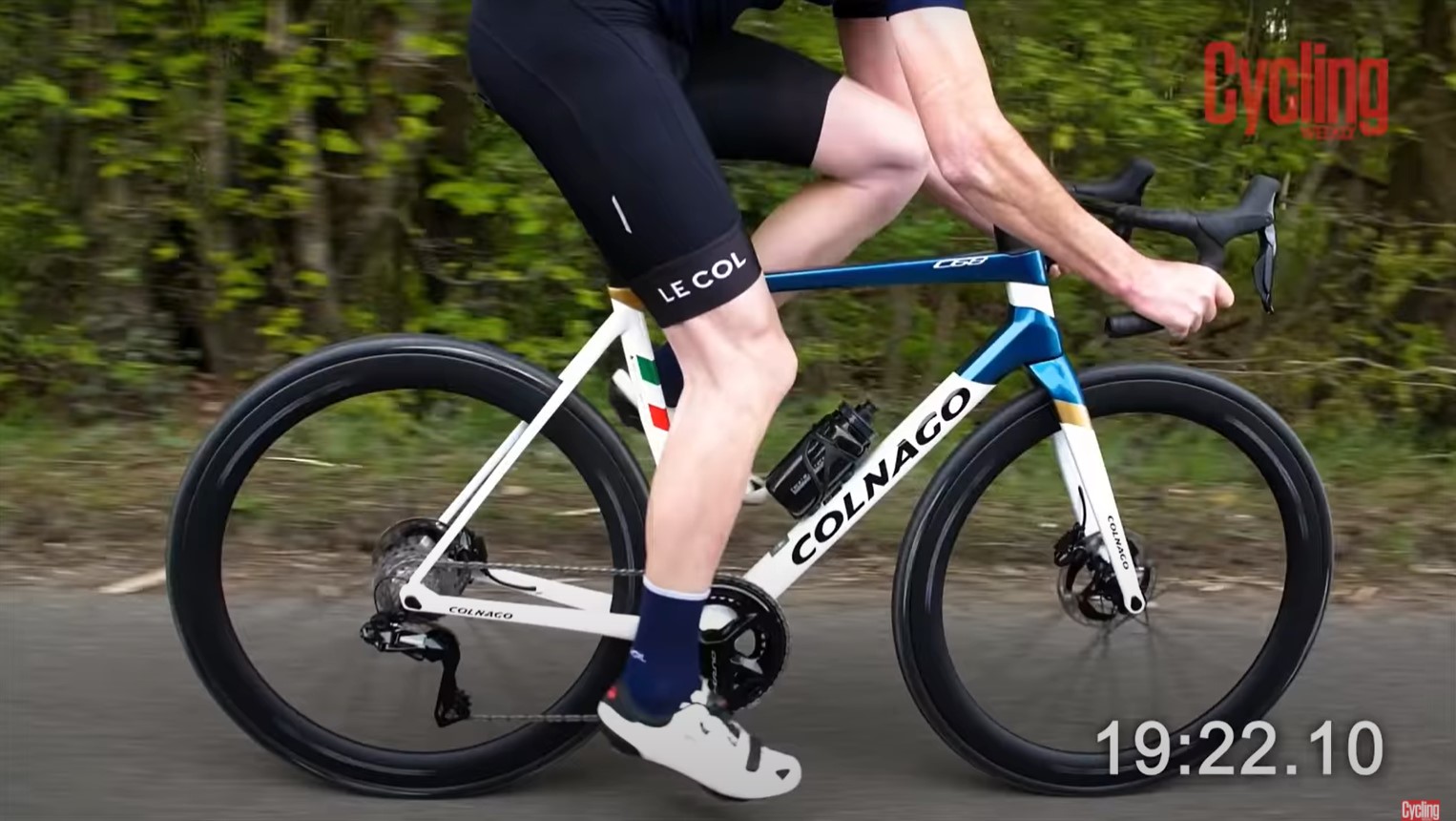
I have to say I was surprised about that, but Xavier said 6.3 watts was within the error margin - traffic would skew things, for example, and I do remember an oncoming tractor on the C68 ride.
And crucially when I asked him how to make the data line up I didn't mention the much narrower handlebars on the Master Olympic.
If you tested the bikes without a rider I’m certain the C68 would be faster, but with the rider (a fairly essential component!), the narrower handlebars on the Master - 38cm in the drops compared to 44 of the C68 - would lower the overall coefficient of aerodynamic drag (CdA). Since it's well known that aerodynamic drag is 80 per cent rider - meaning that often optimising the rider positon, and not the bike makes more difference to overall speed - so it’s actually not that surprising in the end.
What was the difference in feel?
The Master felt fast but very firm. The C68 felt lovely and plush and it was easier to do more power on it. When I did the first lap on the Master I thought there would be no way the C68 would feel nicer. But it did.
Second test: the hill-climb
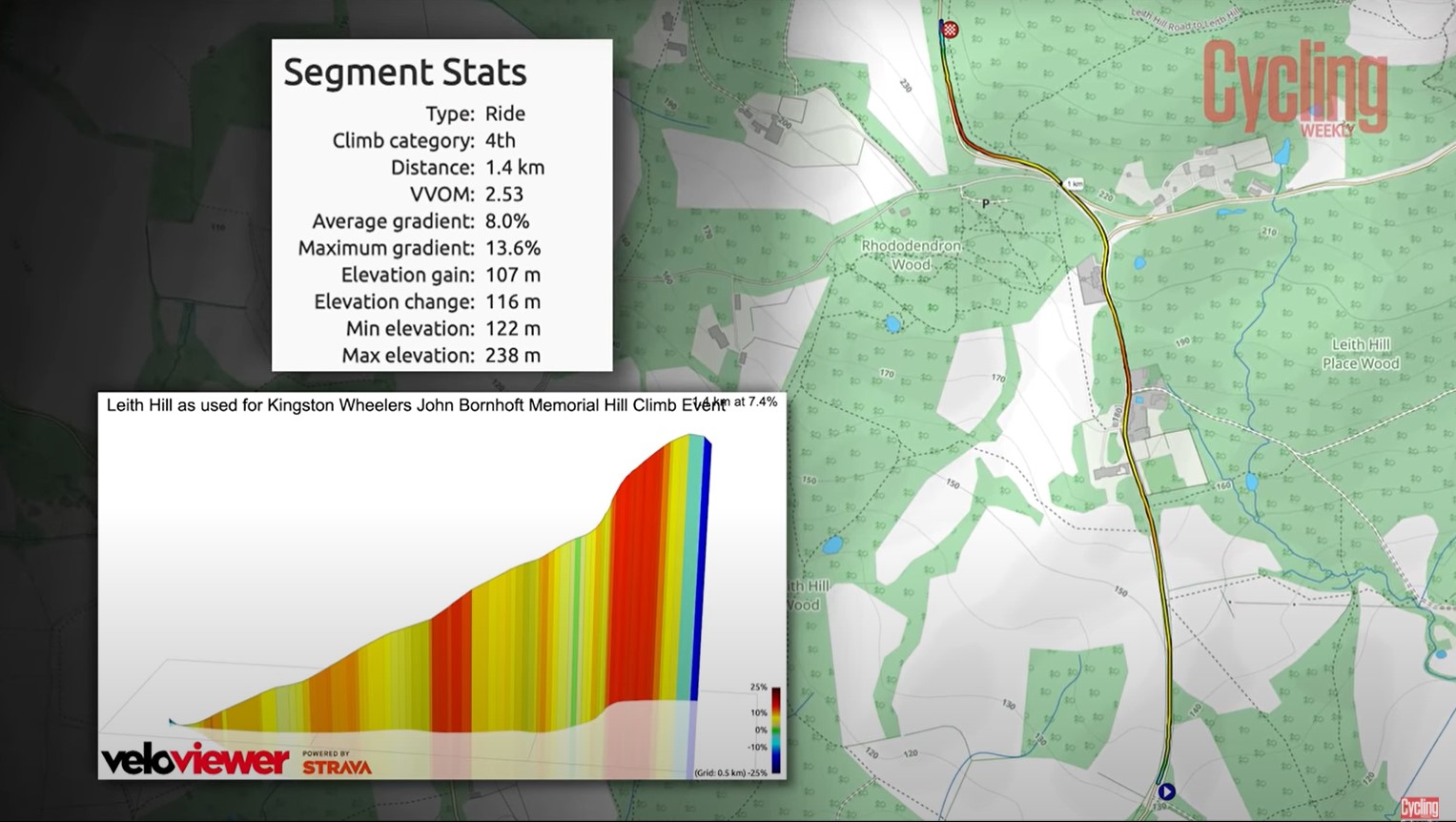
The famous Leith Hill climb - 100 Greatest Cycling Climbs No17 - is a mile and a quarter at an average of 8%. That’s steep enough for weight to be more important than aerodynamics, at least at the 10mph I was doing up it. It’s not a steady climb - there’s a bit that goes up to 32%.
On the Master Olympic completed the climb in 7.53, at 280 watts. On the C68 it was 7.39 for 280 watts. This time I managed to keep the watts steady. Getting tired I think…
The grand total of difference? 14 seconds.
As for ride feel, I didn’t enjoy climbing on the Master much. I was in bottom gear, 39x23, almost immediately with nowhere to go. The hoods are a bit too small to grip comfortably compared to the new Dura-Ace ones. At a slow speed I seemed to feel every bump and found myself steering around rougher sections. I was really glad to finally see Starvealls car park and stopped dead right at the end of it… which wasn’t quite far enough for Strava to pick it up.
As with the Newdigate lap, I felt much fresher and much more comfortable on the C68. I was almost holding back the power so that I wouldn’t exceed that produced on the Master, like I had done for the TT circuit lap. I could have gone on climbing, happily.
Is a modern superbike faster than a classic steel bike?
At lowish speeds on mildly hilly terrain, our test didn't show a vast amount of difference in speed between the bikes. More and better testing would be needed to establish what the difference really is.
As for steeper roads, the 14 seconds over a mile at 8% is more significant, but not a huge amount in the grand scheme of things. It’s about half a second a year.
But, the ride quality of the C68 is light years ahead of the Master Olympic. I've always loved the feel of steel. But, sadly, it didn't hold a candle to the modern carbon of the competitor.
So in 30 years of progress, we’ve gained 14 seconds. It doesn’t sound like much, but let’s leave the data from our little car park test in the car park and think about the bigger picture - the ride quality. This is the thing that makes a bike enjoyable to ride and if this is our criterion there’s a vast difference between these two bikes.
But for me each bike serves a different purpose. If I want a retro, seat-of-the-pants, fast ride on a steel bike that always attracts a lot of attention wherever it goes, it would have to be the Master.
But for ultimate ride feel, the latest in shifting and braking performance, a modern but traditional aesthetic and a bike that will still attract a lot of attention - or jealousy - wherever it goes, it has to be the C68.
Either way if you love Colnagos - I'll admit in my affections they give my children a run for their money and they're certainly much more responsive - then both are winners.

Thank you for reading 20 articles this month* Join now for unlimited access
Enjoy your first month for just £1 / $1 / €1
*Read 5 free articles per month without a subscription

Join now for unlimited access
Try first month for just £1 / $1 / €1
Get The Leadout Newsletter
The latest race content, interviews, features, reviews and expert buying guides, direct to your inbox!
Simon Smythe is a hugely experienced cycling tech writer, who has been writing for Cycling Weekly since 2003. Until recently he was our senior tech writer. In his cycling career Simon has mostly focused on time trialling with a national medal, a few open wins and his club's 30-mile record in his palmares. These days he spends most of his time testing road bikes, or on a tandem doing the school run with his younger son.
-
 Save £42 on the same tyres that Mathieu Van de Poel won Paris-Roubaix on, this Easter weekend
Save £42 on the same tyres that Mathieu Van de Poel won Paris-Roubaix on, this Easter weekendDeals Its rare that Pirelli P-Zero Race TLR RS can be found on sale, and certainly not with a whopping 25% discount, grab a pair this weekend before they go...
By Matt Ischt-Barnard
-
 "Like a second skin” - the WYN Republic CdA triathlon suit reviewed
"Like a second skin” - the WYN Republic CdA triathlon suit reviewed$700 is a substantial investment in a Tri Suit, and it is, but you’ll definitely feel fast in it
By Kristin Jenny